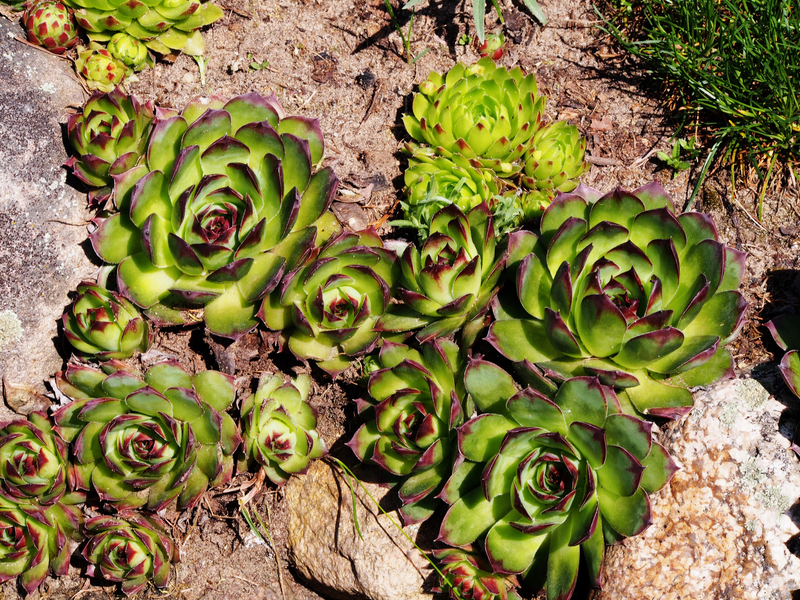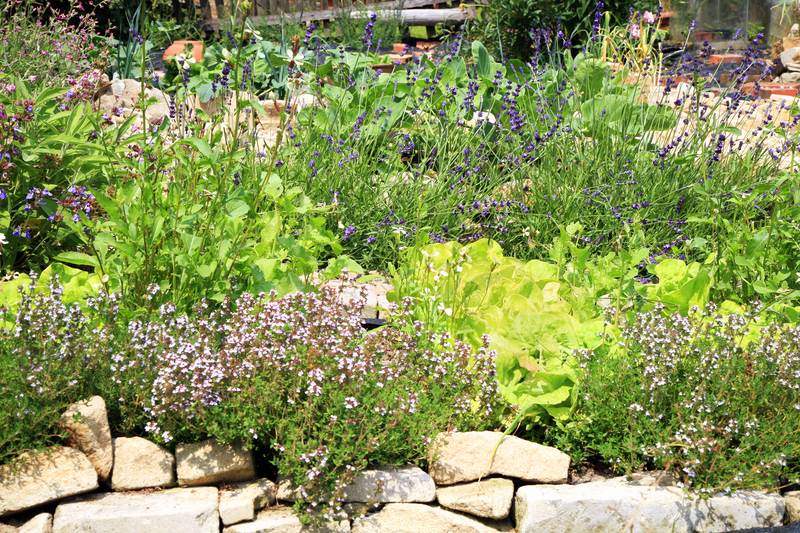From Shrubs to Solutions: Gardening Against Climate Change
Posted on 31/08/2025
From Shrubs to Solutions: Gardening Against Climate Change
As climate change accelerates, our planet's ecosystems are under increasing threat, from melting glaciers to more frequent wildfires. But solace--and solutions--can be found much closer to home, right in our very own gardens. Shifting the way we garden can be one of the most effective grassroots responses to climate change, leading to healthier, more resilient habitats and a positive impact on our planet. In this article, we'll explore how gardening for climate change can transform your backyard from a patch of green into a powerful force for sustainability and adaptation.
Why Climate-Friendly Gardening Matters
The gardening community holds untapped potential in the global fight against climate change. Whether you're planting shrubs, growing vegetables, or cultivating a wildflower meadow, your choices can make a real difference. Climate-conscious gardening offers three compelling benefits:
- Carbon sequestration: Plants remove harmful CO2 from the atmosphere, storing it safely in their roots, stems, and leaves.
- Biodiversity support: Diverse gardens bolster resilience, attract pollinators, and protect wildlife facing habitat loss from climate change.
- Personal and community resilience: Productive urban and suburban gardens can improve food security and create microclimates that protect against extremes.
The Science Behind Gardening and Climate Change
At its core, climate-adaptive gardening functions as a natural solution to environmental challenges. Through photosynthesis, plants absorb sunlight and CO2, producing oxygen and storing carbon within organic matter. Healthy soils--especially those enriched with organic compost--are themselves potent carbon sinks, trapping greenhouse gases beneath the earth's surface.
However, not all gardening is created equal in the fight against climate change. Traditional landscaping practices, such as frequent lawn mowing, heavy fertilizer use, and removal of trees or native shrubs, can actually increase emissions and degrade soil health. To be part of the solution, gardeners must embrace climate-smart practices that prioritize sustainability and resilience.

Transforming Gardens for the Climate: Actionable Strategies
Let's journey from ornamental shrubs to holistic climate change solutions with a look at strategies that make a measurable difference.
1. Planting for Carbon Sequestration
- Choose native shrubs and trees: Native plants are adapted to your local climate and, once established, require less water and maintenance. Many natives, like oak, hawthorn, and viburnum, have deep root systems that store more carbon and stabilize soil.
- Layered planting: Mimic natural ecosystems by planting canopy trees, understory shrubs, and groundcovers together. This provides diverse habitats and increases overall carbon capture.
- Continuous cover: Keep your soil covered year-round with vegetation or organic mulch. Bare soil releases CO2 and is susceptible to erosion.
2. Enhancing Biodiversity and Resilience
- Plant a variety of species--including pollinator-friendly flowers, shrubs, vegetables, and herbs--to support a range of insects and wildlife. Diverse plants are more resilient to pests and changing climate conditions.
- Reduce lawn areas: Lawns sequester far less carbon than shrubs or trees and often require excessive water, mowing, and fertilizer. Replace parts of your lawn with native plant beds or wildflower meadows.
- Build wildlife corridors: Connect your garden to neighboring green spaces or encourage your community to participate in habitat restoration projects.
3. Waterwise and Drought-Proof Gardening
- Install rain gardens: These depressions collect runoff and allow water to filter into the soil, recharging groundwater and reducing erosion.
- Drought-tolerant plants: Choose resilient varieties such as lavender, sage, yarrow, and native grasses that require little irrigation.
- Mulch heavily: Organic mulch not only suppresses weeds and enriches the soil but also retains moisture, reducing your watering needs.
4. Composting and Soil Health
- Compost organic waste: Kitchen scraps, leaves, and grass clippings break down into nutrient-rich compost, which increases soil carbon and fertility.
- Minimize tilling: Tilling disrupts soil microbes and releases stored carbon. Embrace no-dig or low-till methods to preserve soil structure.
- Feed the soil, not just the plants: Add organic matter like compost, leaf mold, and aged manure to fuel beneficial organisms beneath the surface.
5. Reduce Chemical Inputs
- Avoid synthetic pesticides and fertilizers: These products contribute to greenhouse gas emissions during manufacture and application, and degrade soil health. Use organic alternatives like neem oil, compost tea, or biological pest controls.
- Plant companion crops: Certain plants prefer growing side-by-side, deterring pests and improving yields naturally.
Case Study: A Climate-Conscious Garden Transformation
To illustrate the real-world potential of sustainable gardening practices, consider a typical suburban yard featuring large lawns, a handful of ornamental shrubs, and non-native flowers.
-
Step one: Lawn replacement
The homeowner replaces vast stretches of turf with deep-rooted native prairie grasses and low-maintenance shrubs that demand less water and fertilizer. -
Step two: Rainwater harvesting
Gutters are connected to rain barrels and a rain garden is built, capturing runoff for irrigation and providing habitat for amphibians and beneficial insects. -
Step three: Composting and mulching
Yard and kitchen waste is composted onsite, then used as mulch to condition the soil and reduce reliance on chemical fertilizers. -
Step four: Food production
Raised beds filled with organic vegetables and herbs replace flower borders, providing fresh, local produce and reducing food miles.
After just a few years, the garden teems with wildlife, requires less maintenance, survives dry spells and heavy rains, and captures dramatically more carbon than its previous incarnation.
The Power of the Individual Gardener
One of the most compelling aspects of climate-friendly gardening is that it puts power directly in the hands of individuals and communities. Every garden, no matter how small, can contribute to the fight against global warming. Here's how your personal green space can help:
1. Offsetting Emissions
- A single mature tree can absorb up to 48 pounds of CO2 annually, and a thoughtfully planted hedgerow can store even more.
- Replacing a monoculture lawn with a "mini-forest" of mixed shrubs and trees multiplies your garden's carbon storing capacity.
2. Supporting Urban Climate Resilience
- Trees and dense planting cool cities through shade and transpiration, lowering temperatures and reducing the urban heat island effect.
- Gardens act as sponges, soaking up intense rain and reducing the risk of flooding--a growing problem as climate patterns intensify.
- Green spaces improve air quality by filtering out pollutants and producing oxygen.
Common Myths About Gardening for Climate Change
Despite the proven benefits of sustainable gardening, a number of misconceptions persist. Let's dispel a few common myths:
-
Myth: "My small garden is too insignificant to matter."
Fact: Collectively, backyard gardens cover more land than national parks in many countries. Every garden counts. -
Myth: "Shrubs and trees take decades to have an impact."
Fact: Many native shrubs and fast-growing trees begin sequestering carbon within their first year. Soil improvements can be seen even sooner. -
Myth: "Eco-friendly gardens are messy and unattractive."
Fact: Thoughtfully designed climate-smart gardens are beautiful, vibrant, and brimming with life.
Eco-Innovations: Cutting-Edge Gardening for a Changing Climate
As gardeners seek climate-smart solutions, new approaches and technologies are emerging to amplify their impact.
1. Forest Gardening and Food Forests
Inspired by natural woodland ecosystems, food forests combine fruit and nut trees, berry shrubs, vines, and perennial vegetables in highly efficient, layered plantings. These gardens capture more carbon, conserve water, and provide abundant harvests for years to come.
2. Hydrozoning and Smart Irrigation
Grouping plants with similar needs together--and watering them with weather-based smart controllers--minimizes waste and keeps gardens thriving even in drought-prone regions.
3. Living Green Roofs and Vertical Gardens
For city dwellers with limited space, rooftop and vertical gardens turn gray concrete into living carbon sinks and cooling zones.

How to Get Started: Your Climate Change Gardening Checklist
Ready to turn your garden into a climate change solution? Use this checklist to embark on your journey from shrubs to sustainability:
- Assess your garden's current layout and identify areas for improvement.
- Research native shrubs, trees, and perennials suitable for your region.
- Reduce or replace lawn areas with more diverse plantings.
- Compost organic waste and mulch regularly to build healthy soil.
- Install a rain barrel or develop waterwise features.
- Limit chemical inputs and embrace organic gardening.
- Plant a succession of pollinator-friendly flowers for year-round support.
- Connect with community gardening groups for support and inspiration.
Conclusion: Every Garden Grows a Better Future
Gardening for climate change is not just a trend--it's an essential tool in our collective toolbox to combat the greatest environmental crisis of our era. By shifting towards resilient, climate-smart gardening methods, each of us can nurture vibrant landscapes that capture carbon, foster biodiversity, and strengthen our communities against an uncertain climate future.
So, the next time you plant a shrub or tend to your soil, remember: these small acts are part of a global movement transforming gardens from humble green spaces into powerful climate solutions. Together, through mindful gardening, we can help heal the planet--one leaf, root, and flower at a time.
Further Resources
- Gardening in a Changing World - RHS
- 10 Ways to Make Your Yard Better for the Planet - Audubon
- Home Garden Composting - University of Minnesota Extension
From shrubs to solutions, start gardening for climate change today and sow the seeds for a healthier Earth!

